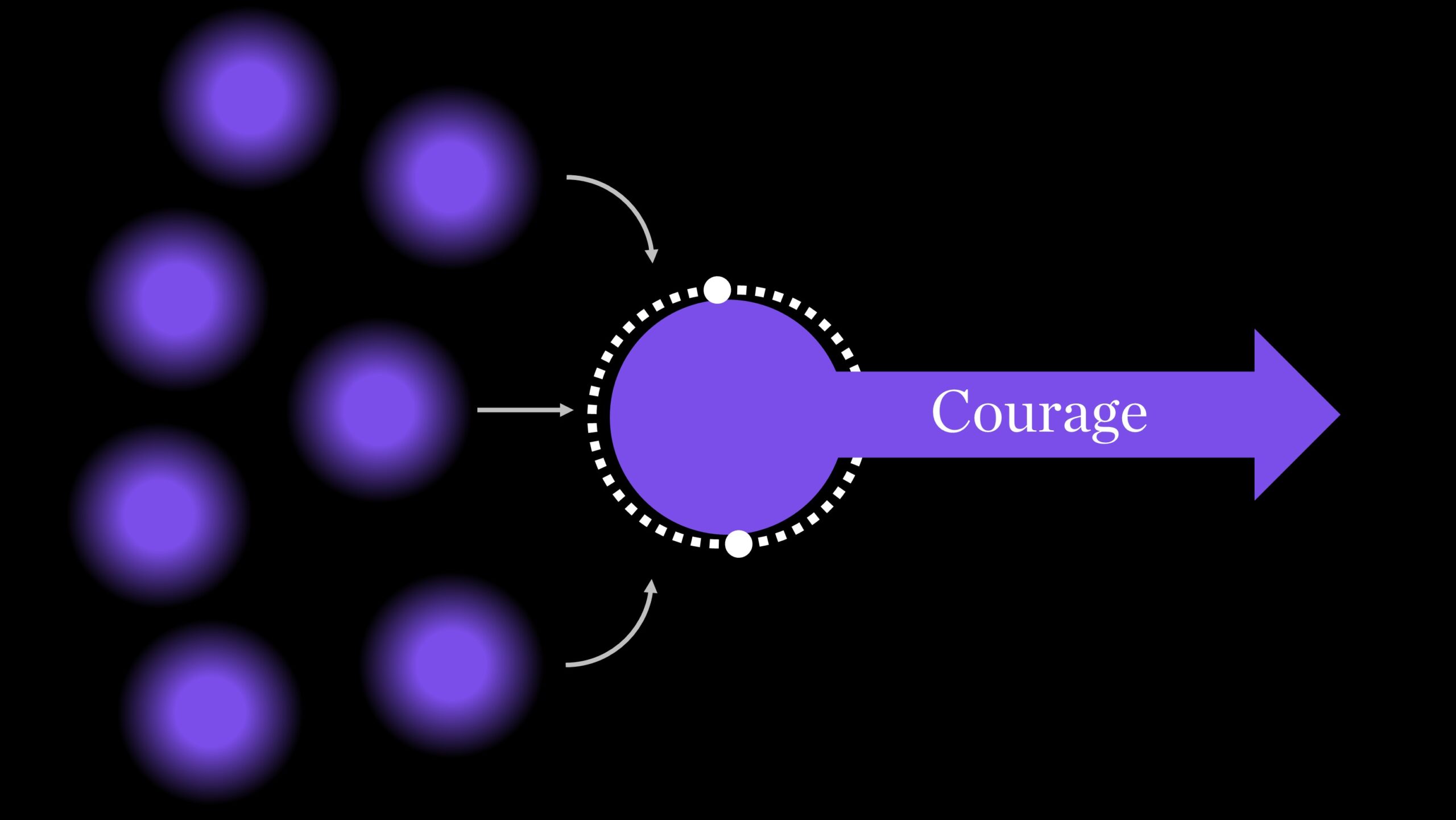Article last updated on January 25, 2023
Fear has a way of infiltrating our decision-making process. It can stop us from taking action and keep us stuck in an endless cycle of paralysis by analysis.
We’ve all experienced this at some point, but it doesn’t have to be that way. By understanding the power of fear based decisions and how to overcome them, we can unlock new possibilities for greater success.
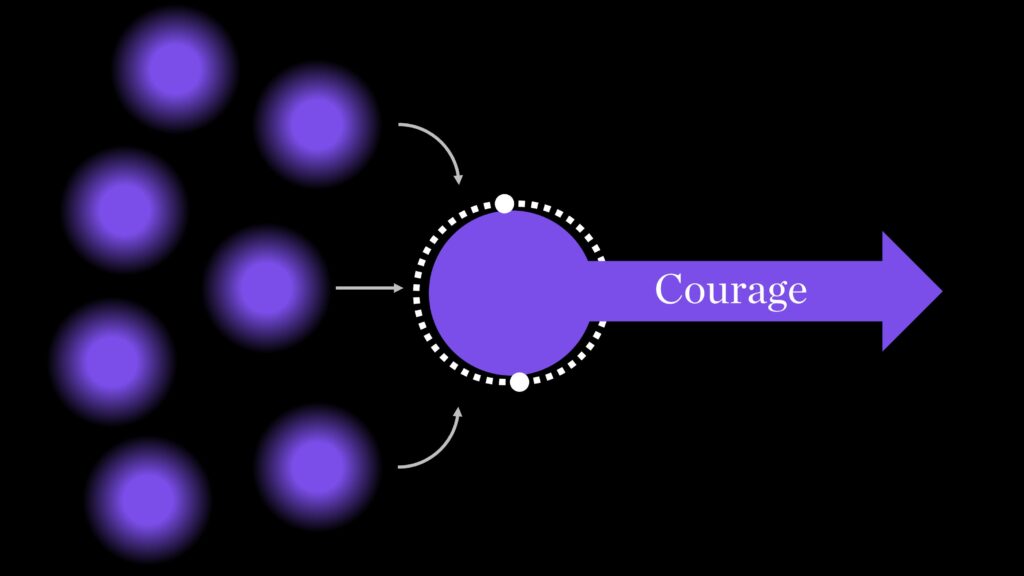
Take the example of Steven, who was about to launch his online business after years of hard work and dedication. He had poured himself into learning everything he could about marketing, product development, accounting, and customer service before launching his website. But when it came down to actually pushing “Go Live” on his site, something held him back: Fear!
The thought of failure stopped him from taking the next step towards achieving his goals.
The truth is that fear holds many people back from reaching their full potential and living life on their own terms.
Thankfully, though, there are ways to break free from these fears and make empowered decisions without letting fear get in your way. Learning how to recognize fearful thinking patterns and developing strategies for overcoming them will help you take control of your future so you can reach heights you never dreamed were possible.
In this article, we look at the psychology behind why we make decisions based on fear, as well as tried-and-true ways to get past them for a more confident mindset and better decisions in life as a whole.
What Is Fear-Based Decision Making?

Fear-based decision-making occurs when we make decisions based on our anxiety and apprehension about the outcome or consequences rather than trusting our intuition and gut feeling in order to proceed.
It can be an insidious presence that stifles creativity and stops us from getting what we really want in life.
We often find ourselves paralyzed by fear, which keeps us from taking any kind of action at all. Our mind gets stuck in this loop where it just won’t let go until something miraculous happens that makes us take action despite how scared we feel inside.
The irony here is that sometimes, even though we know deep down inside that if we don’t do anything now, nothing will ever change for the better or worse, we somehow still end up not doing anything to break free from this fearful state of being anyway.
At such times, it’s important to remember that while fear can keep us safe and alert (in certain situations), too much of it can become counterintuitive and stop us from growing as individuals because every time we experience fear, our body releases stress hormones like cortisol into the bloodstream, which affects both physical health and mental wellbeing over time.
So understanding this emotional impact of fear on our decision-making process becomes essential if we want to overcome it and start living more freely without constantly worrying about “what might happen.”
Understanding the emotional impact of fear in decision making
Understanding the impact of fear in decision-making can be the difference between an empowered life and one held back by debilitating anxiety.
Here are three key aspects of this emotion that we must come to terms with:
- Fear has a paralyzing effect – it stops us from taking action and keeps us rooted firmly in place. We become overwhelmed by all the potential risks associated with moving forward, so instead of progressing, we stay put.
- Fear works against logic – while logically we may understand that certain choices are ultimately beneficial for us, emotionally we’re too scared of what could go wrong to take a chance. This creates a disconnect between head and heart where our feelings cloud what should be done.
- Fear tricks us into thinking small – when faced with risk aversion, rather than embracing challenge and opportunity, we settle for mediocrity because it feels safer.
The truth is that unless we tackle these emotions head-on, they will always hold us back from achieving greatness.
So let’s embrace courage and begin exploring how to manage fear constructively as part of making decisions. By doing so, we not only gain clarity but also equip ourselves with powerful tools to help unlock our fullest potential.
Examining the risks and benefits of fear-based decisions
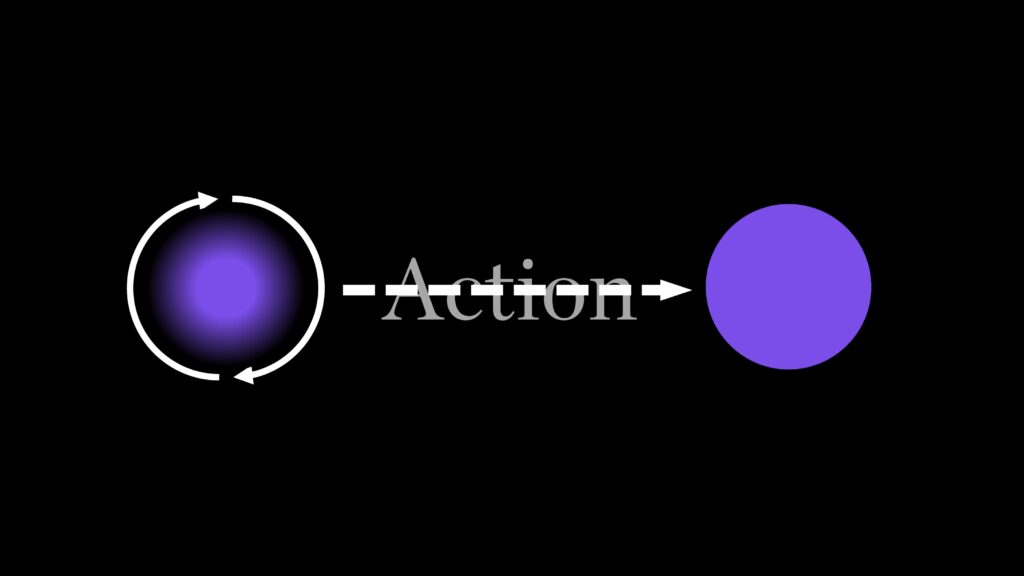
As we consider the risks and benefits of fear-based decisions, it’s important to recognize that there are both pros and cons.
On one hand, fear can motivate us to act quickly in a crisis situation when time is of the essence.
However, if not managed well, this same emotion can lead to paralysis or poor decision making based on irrational thinking.
This is why it’s essential for us to take a step back and evaluate our options before jumping into action. We need to think about what long-term impacts our choices may have and look at potential outcomes from different angles so that we’re minimizing risk while also maximizing potential rewards.
In this way, we can make decisions with confidence and be sure that they won’t come back to haunt us later down the road.
The key takeaway here? Fear isn’t always bad, but it should never be the sole basis for any type of decision making.
Instead, use it as a chance to look at your current situation objectively and carefully weigh all the information you have before deciding what to do.
By doing this, you’ll ensure that your choices are sound ones – even if they involve some level of uncertainty or taking a risk. And then you can move forward confidently towards achieving success!
Recognizing unhelpful thinking patterns and limiting beliefs

When we allow these mental blocks to dictate our actions, we risk missing out on valuable opportunities that could bring us closer to achieving our goals. It’s important that we take the time to think about how fear affects how we make decisions so that we can make choices with full knowledge of what they mean.
Imagining ourselves in an environment where fear doesn’t exist allows us to gain clarity about what truly matters.
We may find that the things that seemed overwhelmingly scary are actually quite manageable when viewed from a different perspective.
By recognizing our unhelpful thought patterns and limiting beliefs, we give ourselves the power to move past them and make better decisions based on the truth instead of what we think is a threat or danger.
The first step toward getting rid of fear is to understand how we think and figure out where we need to change the way we think.
Once these underlying problems have been found, the next step is to get rid of fearful thoughts and bad habits to create a healthier way of thinking.
As challenging as this task may seem at first, there are many strategies available that can help guide us through this transformation process, allowing us to reclaim control over our lives and ultimately thrive despite whatever life throws our way.
Strategies For Reframing Fear-Based Thoughts
Fear-based decisions can be paralyzing, but they don’t have to define us. It’s possible to take control of our decision-making process and reframe fear-based thoughts in order to make better choices for ourselves. Here are some strategies that can help:
- We need to learn how to challenge our inner dialogue. The stories we tell ourselves about why something is not possible or why it will never work out. This means looking at the evidence objectively rather than allowing feelings of anxiety or doubt to cloud judgment. Ask yourself tough questions such as, “What’s the worst thing that could happen? Is this thought true? What resources do I need if things go wrong?”
- Create a plan and break it down into achievable steps. This helps by providing structure and focus while also giving you a sense of progress as each step is successfully completed. Knowing what needs to be done reduces uncertainty and builds confidence – both of which are essential when it comes to overcoming fear-based decisions.
- It’s important to practice self care and build resilience through activities like exercise, mindfulness, or connecting with supportive people around you. Taking regular breaks from unhelpful thinking patterns gives your mind an opportunity to recalibrate itself so that rational thought processes can come back into play. Lastly, use positive affirmations – statements like “I am capable” or “I trust myself”—whenever negative thoughts arise throughout the day.
The key here is recognizing that fear doesn’t have the final say over our lives – once we start consistently replacing fearful thoughts with more helpful ones, real change starts happening! So let’s get started on developing a positive mindset today!
1. Developing a positive mindset
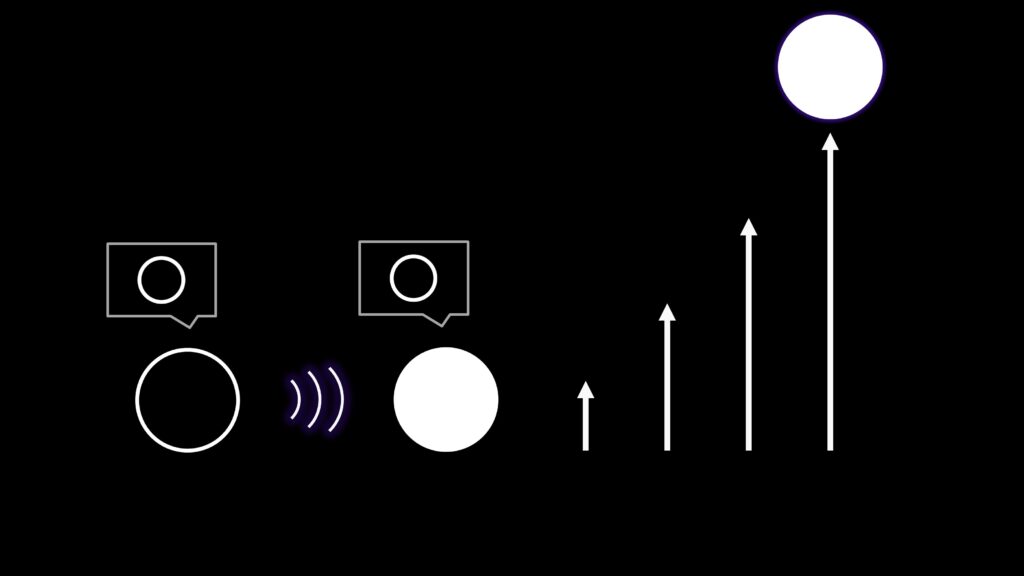
Every day, we make decisions based on our fears. But what if there was a way to break the cycle? Well, you can start by developing a positive mindset – and no, that doesn’t mean sticking your head in the sand and not thinking about anything at all!
We all know fear-based thoughts tend to be pessimistic. So why not challenge them with some optimism?
You don’t have to become an eternal optimist overnight, but try to focus on the good things in life: look for the silver linings in difficult moments; practice gratitude; cultivate relationships with people who lift you up.
Little by little, these steps will help shift your perspective into one of hope and joy instead of dread.
TIP: A great way to get started is to find something small each day that makes you smile – it could be as simple as taking five minutes out of your morning routine to enjoy a cup of coffee or getting lost in a good book during lunchtime.
These seemingly insignificant moments can bring us peace and contentment. In turn, this helps create space for more mindful decision making down the road.
2. Practicing self-awareness

Self-awareness is about understanding our own thoughts and feelings so that we can recognize how they are influencing our behavior.
It’s not just about allowing ourselves to feel what we’re feeling—it’s also about recognizing why those emotions exist and where they come from. When we practice self-awareness, it gives us a better sense of control over our lives by helping us make informed decisions rather than ones driven by fear or anxiety.
As we become more aware of our emotions, values, and beliefs, we gain greater insight into how these things affect our decision making process.
We learn which factors contribute to fear-based decisions as well as how to combat them through conscious choice making. This all comes down to knowing ourselves: becoming comfortable with who we are and trusting that this knowledge will inform the best course of action for us.
By deepening our understanding of ourselves, we can begin to take ownership over our story instead of letting fear dictate it for us.
As we develop this kind of self-awareness, each choice becomes a chance to grow instead of something to be afraid of or to avoid at all costs.
With this newfound clarity comes the strength needed to move forward confidently toward whatever lies ahead.
3. Learning to trust yourself
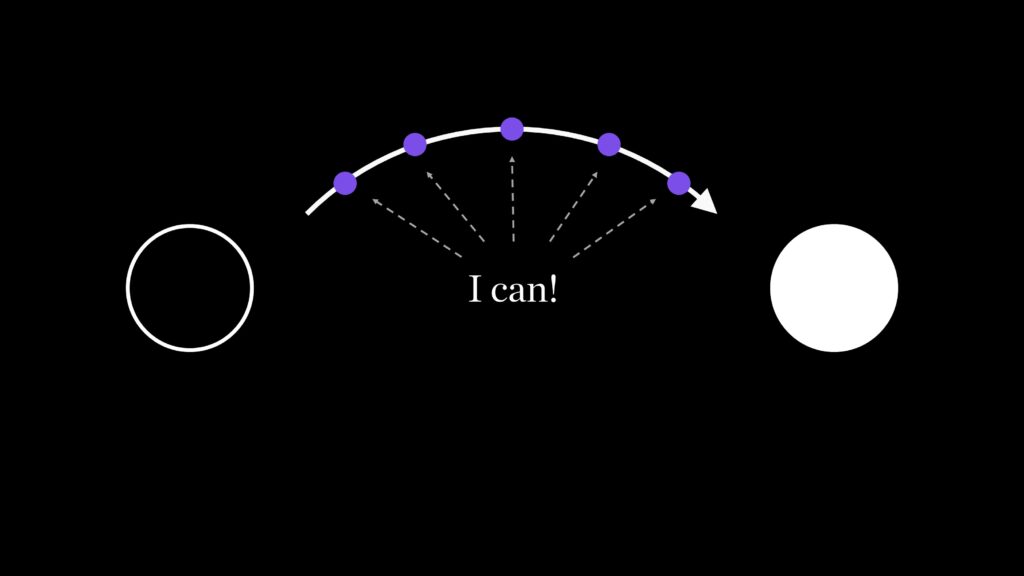
Learning to trust yourself is a key step in overcoming fear-based decisions. Studies show that when people learn to be more self-sufficient and believe in their own capabilities, they are 80% less likely to make choices based on fear. In order to do this, it’s important to get comfortable with uncertainty and accept the unknowns of life.
Here are 3 ways you can start trusting yourself:
- Let go of perfectionism – It’s impossible for us humans to always have control over everything. We’re not perfect; we all make mistakes from time to time. Realizing this will help you become more comfortable with making imperfect decisions without feeling like you need to obsessively analyze every detail beforehand.
- Reframe your thinking – Fear tends to cause “tunnel vision,” where we focus only on what could go wrong or how things might end up badly if we take action. Instead, reframe your thoughts by visualizing how much better things will be if you decide something bravely rather than being fearful and indecisive.
- Take small steps – When trying something new or going outside our comfort zone, taking baby steps can really help build our confidence in ourselves as well as our ability to trust our own decision-making skills. Start small and gradually work your way towards bigger goals, one day at a time!
With practice and patience, anyone can start down the path of becoming more confident in themselves so that fear no longer holds them back!
Moving forward, we can look into identifying core values, which will provide further guidance when making difficult decisions.
4. Identifying your core values

The fourth step in overcoming fear-based decisions is to identify your core values. This isn’t a one-time thing; it’s an ongoing process of self-reflection and growth.
By knowing what you value, you’ll be able to make more informed choices that are better aligned with who you are and what you believe in. Plus, when faced with difficult decisions, having a clear understanding of your core values can help guide the way.
It’s also important to recognize that our core values often come from different sources, such as family, culture, or religion.
It’s up to us, though, to decide which ones we hold dear and want to live by. Taking time to reflect on these deeper questions can be extremely helpful for gaining clarity on what truly matters most to us and how we should prioritize our decision making accordingly.
Having awareness of our underlying drivers enables us to gain control over ourselves by living true to our beliefs rather than succumbing to fear-based choices out of habit or convenience.
When we know ourselves well enough, we have the power to make changes that matter, even when things are hard, because we know where to put our attention.
Next up: creating a supportive environment so you can confidently take action!
5. Creating a supportive environment

We must create an environment that is supportive and encourages us to take risks.
The first step in creating such an atmosphere is to identify our core values. These are the fundamental beliefs that drive us, so understanding them will help us recognize what’s truly important in life. Knowing your core values helps you stay focused on the things that really matter and make sure they don’t get lost or buried beneath other concerns.
It also means surrounding yourself with people who share those same values and support your goals.
Having a strong network of friends, family members, mentors, and colleagues – whatever works best for you – provides comfort and security when taking calculated risks. It’s useful to have someone (or someones) who understands why you made certain decisions and can reassure you if things don’t go as planned.
This type of social reinforcement gives us permission to take chances without worrying about failing too hard or hurting ourselves emotionally.
With these tools in place, building up resilience becomes more manageable – allowing us to push forward confidently even after facing obstacles along the way.
6. Developing resilience

The sixth step in overcoming fear-based decisions is developing resilience.
Resilience isn’t something we’re born with; it’s a skill that needs to be cultivated and honed over time.
It can be acquired through practice, reflection, and growth – all of which are essential for navigating the challenges life throws at us.
We all face difficult situations from time to time, but how we respond makes all the difference. Developing resilience means recognizing our fears and doubts as well as having faith in ourselves that we’ll make it through whatever difficulty comes our way.
We must also have confidence in our ability to handle setbacks without letting them derail us completely.
This requires understanding when to take risks, learning to bounce back quickly after failure, and being able to adapt to changing conditions on the fly.
It takes courage and perseverance to muster up resilience during challenging times. But by doing so, you gain insight into yourself and your own capabilities, creating an opportunity for personal growth along the way.
With this newfound knowledge comes increased self-awareness which leads to greater control over one’s reactions and emotions in future scenarios.
Taking action despite fear becomes easier as you become more resilient; embracing uncertainty while still trusting yourself gives you strength no matter what obstacles may arise in life’s journey. Ready? Let’s move forward toward taking action despite fear!
7. Taking action despite fear

Taking action despite fear is a Herculean task. It feels like trying to move mountains—like you’re walking up a never-ending hill! But it’s essential if you want to overcome fear-based decisions and take control of your life.
When we let our fears dictate our actions, we end up making choices that keep us stuck in the same place.
To break this pattern, we must find ways to confront our fears head on and act courageously. We need to make an effort to recognize when fear is holding us back, then push past those boundaries and take inspired action.
This doesn’t mean facing fear without any preparation or support; instead, it means approaching challenging situations with resilience and determination.
Through mindful practice and taking care of ourselves, we can build up the strength we need to act despite our fears.
With each step forward, no matter how small, our confidence grows as we realize just how capable we are of handling difficult circumstances.
We may not always succeed in overcoming every obstacle thrown at us, but by taking even one brave step towards conquering our fears, we will have already achieved something remarkable—we’ll have taken control of ourselves and found the power within us to live more freely than ever before.
Frequently Asked Questions
After reviewing all the information above, you still might have some questions or doubts. Let’s go through some of the frequently asked questions about fear-based decisions and how to take charge of your life:
How can I better use my intuition so I don’t act out of fear?
The best way to tap into your intuition is to practice mindfulness. Mindfulness involves being present in the moment and paying attention to your thoughts, feelings, and physical sensations without judgment.
This helps you become aware of any underlying fears or doubts that may be influencing your decisions. Also, it can help you realize when you’re making a decision out of fear and give you a chance to stop and think about other choices.
How can I recognize when a decision I am making is fear-based?
The first step towards recognizing fear-based decisions is slowing down and taking a deeper look at our motivations.
What needs are driving us in a particular direction? Are those needs based on genuine opportunities or out of fear of the unknown? It can help to ask yourself questions such as: “What am I afraid will happen if I don’t make this decision?”
It’s also important to remember that fear isn’t necessarily bad. Fear exists for a good reason; it helps protect us from danger and keeps us safe.
The key is being aware of how it influences our decision-making process so that it doesn’t get in the way of achieving our goals. Once you understand your fears, you can use them as fuel for growth instead of letting them hold you back.
By facing your fears head-on and consciously working through them, you’ll be able to make better decisions with clarity and confidence.
What strategies can I use to reframe fear-based thoughts?
Here are some ways you can do just that:
1. Notice when fear is driving your decisions – by being aware of how fear affects us, we can begin to take back control of our choices.
2. Challenge your automatic assumptions – often times our fears are based on worst-case scenarios that aren’t likely to happen. Ask yourself if these assumptions are really true or if they’re just a product of fear?
3. Reframe your anxiety into excitement – instead of focusing on all the potentially negative outcomes, why not focus instead on what could go right? This approach helps create momentum toward positive action rather than stagnation due to worry and stress.
Fear will always be a part of the human experience, but with self-awareness and conscious thought, we can prevent fear from becoming the primary motivator in our life decisions.
We don’t need to let fear dictate who we become; instead, we can use its energy as motivation for growth, creativity, and success – turning trepidation into triumph! So embrace the power of fear without letting it overwhelm you; challenge it with curiosity and courage so you can live up to your fullest potential!
How can I create a supportive environment to help me make decisions?
Creating a supportive environment to help you make decisions is essential for overcoming fear-based decisions. It’s not easy, but it can be done with a few simple steps. Here are three ways to create an encouraging atmosphere:
1. Surround yourself with people who support and encourage your decision making process. Find mentors in your life that will hold you accountable when necessary. This could mean friends, family members, therapists, or coaches – anyone who will listen and provide valuable advice on how to best move forward.
2. Take time to reflect on the situation before jumping into action. Check in with yourself about why you’re feeling fearful and try to identify any underlying assumptions or beliefs that may be driving those feelings of anxiety. Once you have clarity about what’s causing your apprehension, it’ll be easier to decide if taking action is truly warranted.
3. Incorporate activities like journaling or meditation into your daily routine to give yourself an opportunity to relax and process thoughts without judgement from others. Taking moments throughout the day for introspection can also help center focus on the present moment – allowing for more objective decision making free from emotional triggers or past experiences clouding judgment.
No matter which route you choose, remember there’s no one-size-fits-all approach when it comes to creating an environment conducive to making sound decisions; it all depends on personal preference and individual needs at any given point in time!
With some patience and an understanding of what works best for you, conquering fear-based decisions becomes much more manageable…and even enjoyable!
Conclusion
Making decisions can be hard, especially when they are based on fear. But it doesn’t have to be that way. By recognizing our own fears and understanding how to reframe them into positive thoughts, we can learn the skills necessary to make decisions without letting fear take over.
We can start by taking a step back to recognize when our decision making is being influenced by fear, then look for ways to create a supportive environment to help us make more empowered choices.
As we build trust in ourselves and focus on developing a positive mindset, we will find that our decisions become easier and less fearful.
It’s time for us to break free from the shackles of fear-based decision making. Let’s use this opportunity as an invitation to rewrite our story with courage!
So why not seize the day? Let us plunge headfirst into overcoming fear-based decisions, like a swan gracefully gliding across a lake, so that we can finally live life boldly and authentically!


